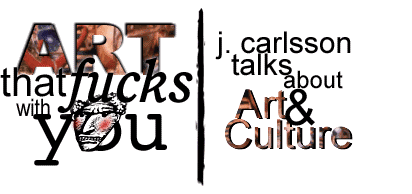 |
The rise of the commercial classes during the 17th century in Europe, Japan, and the colonial Americas was accompanied by the rise of new art forms and presentational venues that this ascendant middle-class embraced as its own.
- Shakespeare's intellectually complex plays were presented in the Globe Theater, a large, technically sophisticated playhouse whose broad stage was augmented by trapdoors and balconies, so that the complicated worldly and otherworldly human issues in the playwright's works would resonate and be remembered through the magic of their presentation. In Japan, Kabuki and Noh theater emerged in commercial districts, aimed at entertaining and metaphysically educating popular taste.
- Art academies in Florence and Bologna were committed to teaching scientifically realist drawing methods — forcing students to see the world as it empirically is, and to teaching balanced, classical modes of pictorial composition so students will communicate to viewers an image of the world as it ideally and rationally should be. National academies throughout Europe, modeled on these, began conducting annual shows. Printmakers' folios spread these middle-class pictorial values worldwide. Japanese ukuyi-e artists turned printmaking into a major pictorial form, amusing viewers with a picturesque travelogue while prompting the development of their visual and emotional sensibilities.
- Soon after the invention of the printing press, the prose novel arose, appealing to the newly literate as a form of leisure entertainment. Taking the genre form of the picaresque in 1599 in Spain, these stories followed the episodic adventures of a lone protagonist as (usually) he encountered the sordid truths of a sinful material world — allowing readers to vicariously enjoy these experiences while learning moral lessons about why it was wise to avoid indulging in them. While this Spanish genre appealed to youth, in the latter part of the 17th century there emerged a French variation of the novel, the drawing-room melodrama, which appealed to parents. Its specific messaged warned parents about the dangers — adultery, jealousy, madness, murder, or other ways of bringing disgrace upon the family — arising from forcing the young into arranged marriages. The Spanish and French genres merged in 18th century England into the realistic novel as we know it today, with its breadth of scope and depth of feeling, in the writings of Defoe, Richardson, Fielding, and Austin.
- The middle class also enjoyed its music. Between doing commissions for the church and aristocracy, musicians like Mozart would put his tunes to sheet music for the musically avid to play at home for fun or to entertain others. But Mozart would also produce ambitious, sometimes politically controversial compositions such as The Magic Flute into the huge opera houses then coming into being.
- Theater, art, literature, and music all contributed to work out and promote a world view serving the interests of this rising class. This middle class would by and large take over the world by the end of the 19th century.
- Simultaneously, a new breed of creative artist was evolving. Some playwrights began focusing upon the social conflicts inherent in contemporary material existence and the anguishing dilemmas faced by individuals of sensitivity and conscience. Painters rejected the art academy and its standards of pictorial realism and classicism in favor of more abstract and expressive pictorial approaches. Writers rejected the drawing-room sensibilities of the realistic novel in favor of the underlying symbolic possibilities of prose narrative. Musicians turned away from conventional, rational harmonies.
- Smaller, more intimate venues increasingly replaced the large institutional edifices in featuring these renovated artistic idioms — tiny fringe theaters, independent commercial art galleries along with experimental alternative spaces, little magazines plus small presses, and music performances being held in studios, clubs, and modest recital halls.
- In the 20th century, the middle-class audience has become split between the large and the small. The large institutions feature either old or more recently co-opted "classics" (say, a Van Gogh retrospective doing the museum circuit, crediting the artist as a "virtuoso" individual talent where once he had been deemed just another mad artist with slipshod technical abilities) or brand new "spectacles" (the latest flashy Broadway musical with its big production numbers). The small venues feature the genuinely new, often local, often unknown and emerging talent.
Both compete for a dwindling middle-class audience — most of whom are defecting to the even newer artistic mediums of cinema, recorded music, radio, nightclubs, pulp paperbacks, picture magazines, TV, rental videos, video games, and the Internet. With a set of values more attuned to consumer culture as a fait accompli rather than to the earlier, more rational and edifying middle-class values that helped to create it, the new consumer mediums iterate a clamorous culture — one turned on by the dizzying unreality of sensory illusions while embracing things tipped into imbalance and racing along at breakneck speeds. They are intimate in their address, appealing to the solitary individual, but even more universal, more whole-world embracing than the larger venues could ever hope to be.
Back to the Easy Road to the Opera House Esthetic
|
 |


